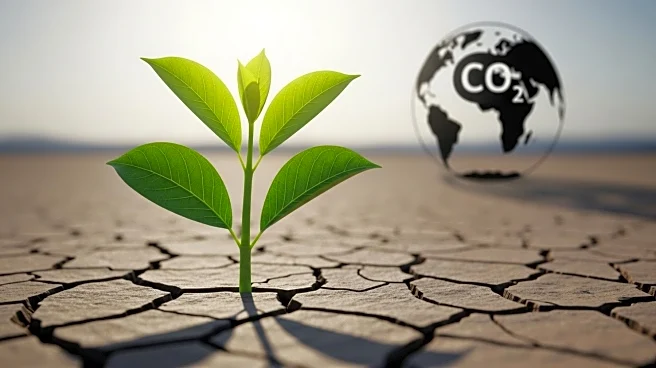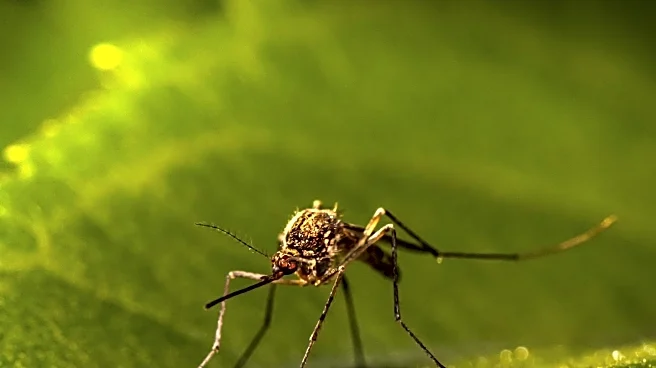What's Happening?
Researchers at the University of Texas at Austin have found that the decline of aerosols in the atmosphere is contributing to an increase in the frequency of heat waves, particularly in densely populated regions. Aerosols, which are liquid or solid particles in the air, originate from sources such as agricultural burning and industrial pollutants. These particles reflect sunlight and brighten clouds, thereby cooling the planet. However, unlike greenhouse gases, aerosols tend to remain concentrated near their source, often in populated areas. The study, led by Geeta Persad, assistant professor at UT-Austin's Jackson School of Geosciences, indicates that as aerosols decrease, the masking effect they have on warming is reduced, leading to more heat waves. This trend is already observable in North America and Europe, and is expected to intensify in regions like South Asia and Sub-Saharan Africa as they industrialize and reduce aerosol emissions.
Why It's Important?
The findings of this study have significant implications for public health and climate policy. While aerosols contribute to cooling, they are also linked to severe health issues, causing millions of deaths annually due to lung cancer, respiratory diseases, and heart disease. The reduction of aerosols, while beneficial for health, could lead to a substantial increase in heat waves, which pose their own risks to human health and infrastructure. This presents a complex challenge for policymakers who must balance the health benefits of reducing aerosols with the potential for increased climate extremes. The study suggests that as aerosol emissions continue to decline, the global average number of heat wave days per year could nearly triple by 2080, highlighting the urgent need for adaptive strategies in climate and health policy.
What's Next?
As the study predicts a significant rise in heat waves due to reduced aerosols, regions worldwide may need to implement adaptive measures to mitigate the impact of these climate extremes. This could involve enhancing infrastructure resilience, developing heat action plans, and investing in technologies to manage heat stress. Policymakers may also need to consider strategies that address both the reduction of harmful aerosols and the adaptation to increased heat waves. The study underscores the importance of integrated approaches that consider both environmental and health impacts in future climate policies.
Beyond the Headlines
The study highlights a critical intersection between environmental science and public health, emphasizing the need for interdisciplinary approaches to tackle complex climate challenges. The reduction of aerosols, while beneficial for health, reveals underlying warming effects that were previously masked, prompting a reevaluation of climate strategies. This development could lead to increased research into alternative cooling methods and technologies that do not compromise air quality. Additionally, the study may influence global discussions on climate justice, as regions with lower emissions may face disproportionate impacts from increased heat waves.











